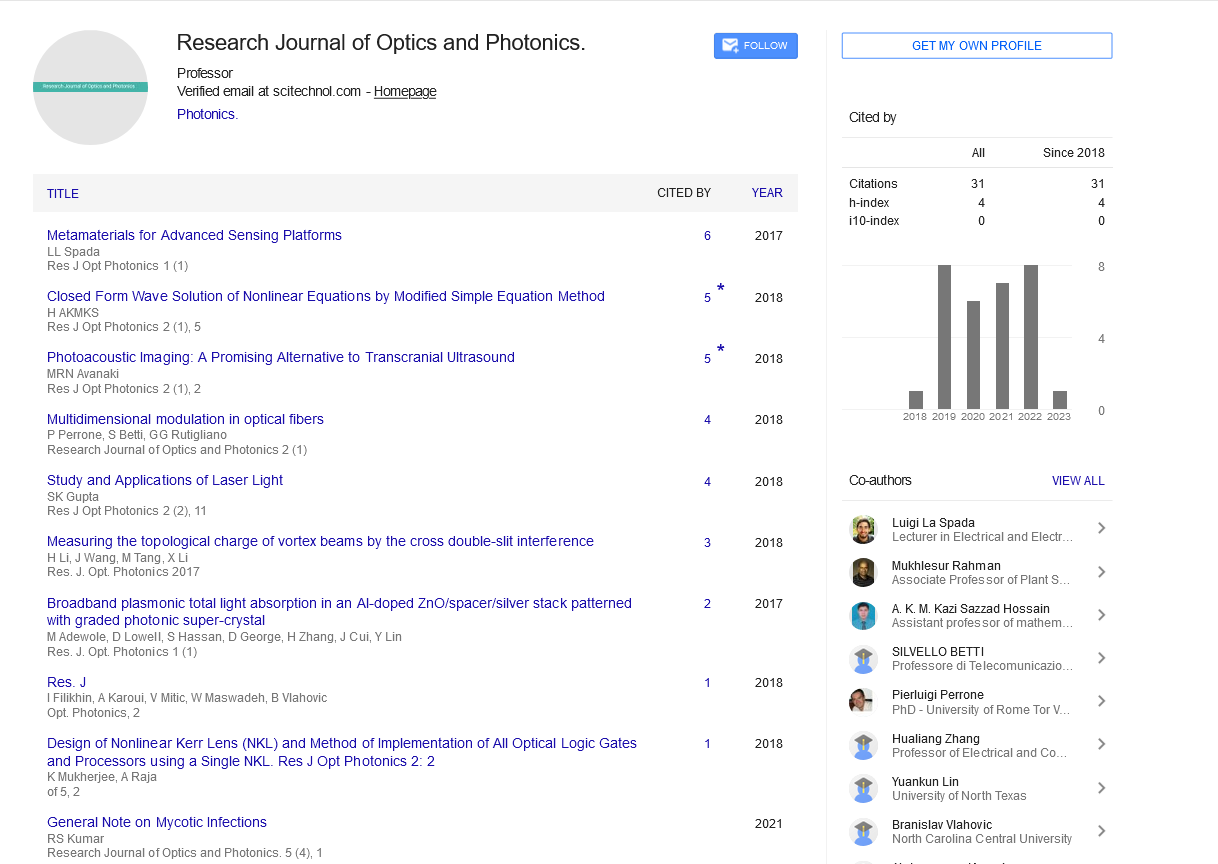Opinion Article, Res J Opt Photonics Vol: 5 Issue: 6
Green Evaluation of Photonic Crystal Slab
Wayne Brady
Department of Physics and Astronomy, Vanderbilt University, Nashville, USA
Keywords: Photonic crystals, Stabilized PWEM
Photonic crystals (pcs) are optical nanostructures which their electric permittivity is periodic in one, two, or 3 dimensions. This periodic permittivity affects photons in the equal way as periodic capacity affects electrons in ionic crystals. As an end result, electromagnetic waves in these materials are within the form of Bloch waves. There are some finite and non-stop frequency bands wherein electromagnetic waves cannot propagate in pcs. Existence of those bands which might be known as photonic gaps is the principle assets of computers. Lord Rayleigh, the English physicist, located photonic gaps in a one-dimensional laptop for the first time in 1887, however till a century later, when Yablono vitch anticipated the lifestyles of photonic gaps in 3-dimensional pcs, there were no uses of them. In these days, pcs have discovered many programs in unique fields, consisting of performance improvement of solar cells, omnidirectional surfaces, optical fibers and waveguides, optical cavities, excessive efficient LEDs, and included optics. As mentioned above there exists 3 styles of photonic crystals primarily based on their permittivity periodicity dimensions. Obviously, fabrication of preferably ideal and 3-dimensional pcs with photonic gaps in optical frequencies is impossible due to their limitless extensions. For the case of dimensional structures, the third measurement may be restricted to a finite volume, which is referred to as the slab computer. The permittivity of a slab pc remains periodic in -dimensions but in contrast to the two-dimensional pcs, it relies upon on the 1/3 factor this is perpendicular to the slab floor.
 Spanish
Spanish  Chinese
Chinese  Russian
Russian  German
German  French
French  Japanese
Japanese  Portuguese
Portuguese  Hindi
Hindi 